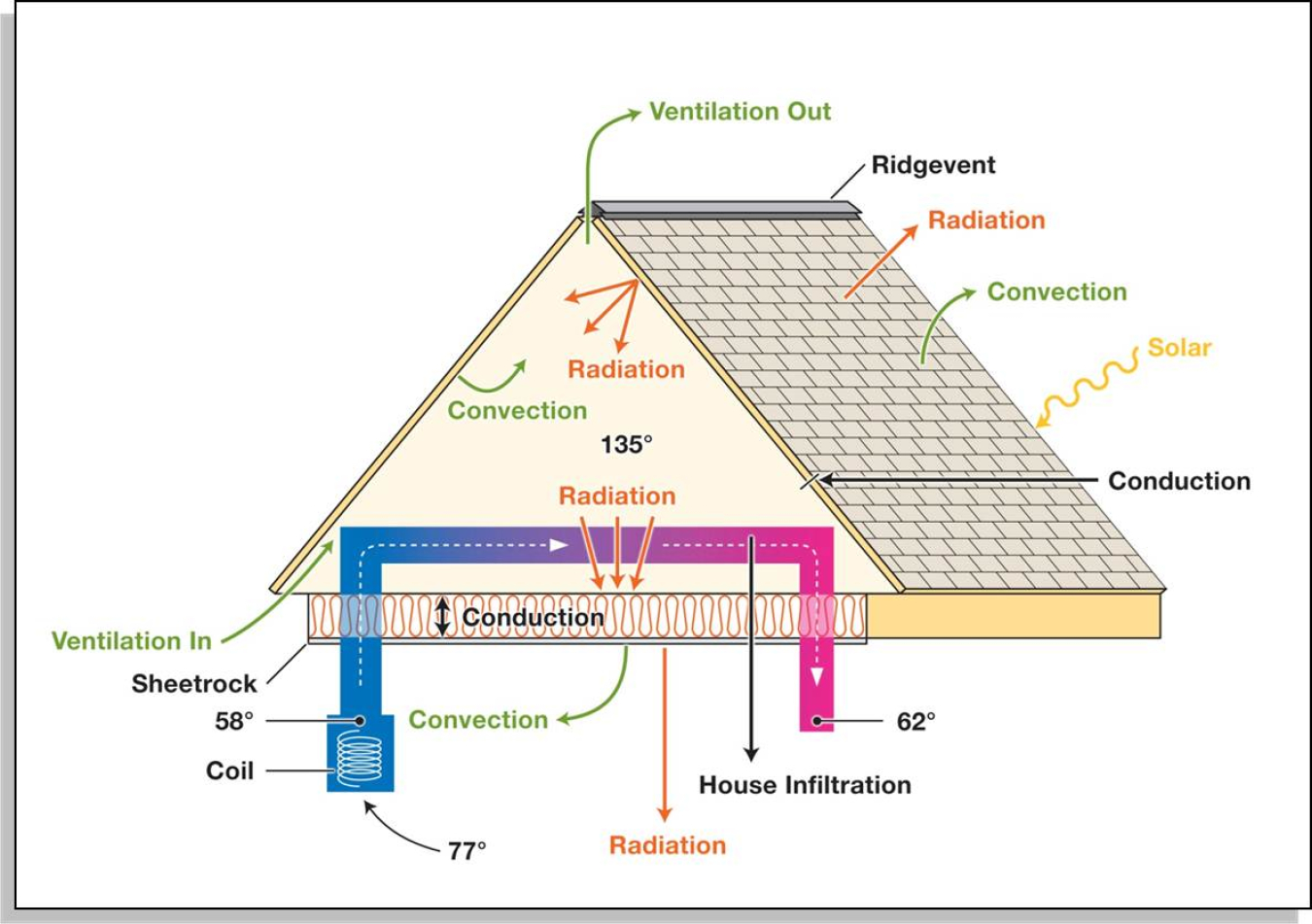Lead Performer: Oak Ridge National Laboratory - Oak Ridge, TN Partner: Fraunhofer USA - Boston, MA
June 16, 2014
This graphic depicts all the modes of heat transfer that AtticSim evaluates.
Lead Performer: Oak Ridge National Laboratory - Oak Ridge, TN
Partners: Fraunhofer USA - Boston, MA
DOE Funding: $220,000
Project Term: October 1, 2013 - September 30, 2014
Project Objective
The ultimate goal is to provide the DOE with a validated and benchmarked duct model, the Fraunhofer attic model, that accounts for radiation and convection heat transfer along the length of the duct for computing radiation, convection, and thermal capacitance losses during both on and off cycles of the comfort conditioning system. The code will be programmed to merge into the C++ framework of EnergyPlus. To accomplish the goal, the objectives for the balance of FY14 are threefold: (1) ORNL to conduct laboratory tests in its Large Scale Climate Simulator (LSCS) to document the effect of leaky and airtight ducts in ventilated and sealed attics; (2) Fraunhofer to formulate and program a duct model into its Fraunhofer Attic Thermal Model (FATM); (3) validate the FATM model against the laboratory measures acquired by ORNL in the LSCS.
Project Impact
U.S. Census Bureau data for homes show 50% to 70% of the existing 116 million residential homes are slab-on-grade, implying that the heating, ventilation, and air-conditioning (HVAC) unit and associated ductwork are in the extreme temperatures of an attic. ORNL analysis using AtticSim / EnergyPlus shows the HVAC and ducts in the extreme temperatures of an attic attribute to an added 30 to 50 MBtu/year of lost energy per home, which totals a staggering 2.9 Quads of wasted energy (see image 1 in Illustrative Project Graphics). Developing validated tools to predict these losses would help enable academia, research institutions, and practitioners to comprehend the implications of ducts in an unconditioned attic. Adding more and more insulation to the attic is not the solution; however, that is exactly the strategy ASHRAE, the IECC and other code bodies recommend. Installing the duct in the conditioned space and sealing the attic floor are critical designs that governing codes should mandate. The work proposed herein would increase the likelihood of builder’s awareness to keep the ducts out of the attic for new construction and to repair leaky ducts in existing construction.
Contacts
DOE Technology Manager: Amir Roth
Performer: Andre Desjarlais, Oak Ridge National Laboratory

